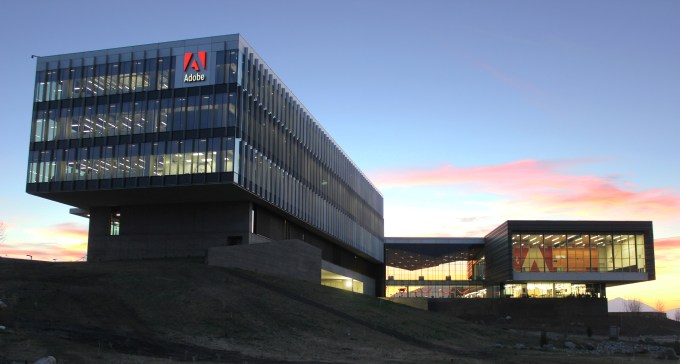Up until 2013, Adobe sold its software in cardboard boxes that were distributed mostly by third party vendors.
In time, the company realized there were a number of problems with that approach. For starters, it took months or years to update, and Adobe software was so costly, much of its user base didn’t upgrade. But perhaps even more important than the revenue/development gap was the fact that Adobe had no direct connection to the people who purchased its products.
By abdicating sales to others, Adobe’s customers were third-party resellers, but changing the distribution system also meant transforming the way the company developed and sold their most lucrative products.
The shift was a bold move that has paid off handsomely as the company surpassed an $11 billion annual run rate in December — but it still was an enormous risk at the time. We spoke to Adobe CIO Cynthia Stoddard to learn more about what it took to completely transform the way they did business.
Understanding the customer
Before Adobe could make the switch to selling software as a cloud service subscription, it needed a mechanism for doing that, and that involved completely repurposing their web site, Adobe.com, which at the time was a purely informational site.
“So when you think about transformation the first transformation was how do we connect and sell and how do we transition from this large network of third parties into selling direct to consumer with a commerce site that needed to be up 24×7,” Stoddard explained.
She didn’t stop there though because they weren’t just abandoning the entire distribution network that was in place. In the new cloud model, they still have a healthy network of partners and they had to set up the new system to accommodate them alongside individual and business customers.
She says one of the keys to managing a set of changes this immense was that they didn’t try to do everything at once. “One of the things we didn’t do was say, ‘We’re going to move to the cloud, let’s throw everything away.’ What we actually did is say we’re going to move to the cloud, so let’s iterate and figure out what’s working and not working. Then we could change how we interact with customers, and then we could change the reporting, back office systems and everything else in a very agile manner,” she said.
Speeding up development

Adobe Creative Cloud app cloud. Image Credits: Adobe
But it was far more than rejiggering the website and adding some back office customer systems. It also involved completely changing the way they developed the tools in the Adobe Creative Suite. They were shifting dramatically from a waterfall development method with 18 months of development runway to agile and continuous delivery, and that meant the engineering team had to completely change the way it worked.
At the time of the big move, the company built monolithic applications, but that wouldn’t work for a cloud/subscription model. It required moving to a microservices approach, something that would have been fairly unusual in 2014 when it began the shift.
“We definitely had to rearchitect the products to move to microservices along with a set of foundation services,” she said. Those included services like storage, search and eventually artificial intelligence that each individual application could tap into without having to build it over and over for each tool.
For many reasons, a monolithic application could no longer work, whether it was from a development timeline standpoint or application stability in a cloud context. As Stoddard pointed out, by using microservices a piece of the application could go down, but the application could continue to run independently of it, and that became crucial in the cloud.
Managing the transition

Image Credits: Adobe
A change of this magnitude can be jarring to even the most flexible employee, and it’s a huge challenge helping employees understand how their jobs are going to shift. A big part of making a change this significant is managing the people involved, so they are on board with what you are doing. That takes a lot of communication to make sure everyone understands their role as you move to new systems.
She says you need strong leadership and clear messaging coming from the top to the engineering teams. “You have to work with people. You can’t just say, ‘Okay we’re going to move everything to the cloud.’ You have to actually work with the engineering teams, empower them to try new things out, help them with the right level of tooling and how they work as an organization,” Stoddard explained.
Once you empower your people, she says that you need to create an atmosphere where people feel comfortable sharing their learnings to keep the changes spiraling outward across the organization. “We feel that innovation can come from any place in the company. It doesn’t need to come from an innovation group or whatever. So we actually encourage groups to experiment and try new things out, and then share amongst the different groups,” she said.
Change doesn’t happen all at once
Stoddard says the important thing to remember about managing a process like this is that it’s always evolving, even today. You don’t do everything at once and you iterate as you go, and get a little better each year. Seven years into the change, she says her people are still moving along that continuum.
As they got to know who their customers were, and changed the underlying systems to support that, the company grew to better understand those customers, improving their experiences and helping them use their Adobe products more effectively. All of that took data about how people used the website, what products they were interested in and which features they were using in the products.
“I wouldn’t say that it wasn’t just throwing the baby out with the bathwater. It was kind of an evolution of looking at how do we change, how do we progress through this journey and continuously looking at how we make it better along the way.”
